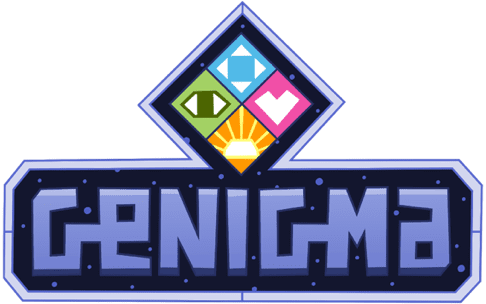The game — GENIGMA — is out today on iOS and Android and is available in English, Spanish, Catalan, and Italian. It is the result of a two-and-a-half-year collaboration between researchers at the Centre for Genomic Regulation (CRG), the Centro Nacional de Análisis Genómico (CNAG-CRG), and local video game professionals.

On the surface, GENIGMA is a puzzle-solving game where players organize blocks of different colors and shapes in various configurations to achieve the highest possible score. In the background, however, how players solve these puzzles is helping researchers untangle genetic sequences in order to create ‘cancer cell lines’, information that can help fight breast cancer.
Gaming for the cause
“Cell lines are responsible for the discovery of vaccines, chemotherapies for cancer or IVF for infertility. This makes them a pillar of modern biology,” explains ICREA Research Professor Marc A. Marti-Renom, with dual affiliation at the CRG and CNAG-CRG and whose research underpins GENIGMA.
“However, the lack of genome reference maps limits current scientific progress. It’s like asking people to navigate modern cities using maps from the past. With the help of other people, we can update these maps, which will allow us to make fast progress in breast cancer research.”
GENIGMA was designed to help boost the world’s research efforts on cancer lines, as this information is critical for studying cancer cells and how they would interact with various drugs. One of the largest issues researchers that study these cell lines have is the lack of accurate, high-resolution genome reference maps, which allow them to pinpoint the exact location of certain genes.
The team behind the game believes that data generated by human players would be a more effective approach to generating or updating these maps compared to using AI alone for the task. While AI is reliable, they say that the ‘herd intelligence’ of players can help provide some creative solutions that automated systems may not be able to reach. During the development of GENIGMA, the researchers developed a series of methods to create genomic reference maps by visualizing the genome in three-dimensional space.
Each string that players toy with in the game represents a genetic sequence in the cancer cell line. How players organize the blocks in each string is a potential structure of these sequences, indicating the possible location of individual genes. The more players partake, the volume and quality of data that the researchers draw from the game becomes.
“Anyone with a smartphone from anywhere in the world can download GENIGMA for free and make a direct contribution to research, lending their logic and dexterity to the service of science,” says Elisabetta Broglio, citizen science facilitator at the CRG. “GENIGMA will analyze the solutions provided by the players as a collective and not as individuals, and will take advantage of creative solutions impossible to find with deterministic algorithms.”
The game launched today, and the researchers are planning a three-month campaign (the #GenigmaChallenge) to mark the event. Every Monday over the next three months, they will introduce new genome fragments from a certain cell line (T-47D) for players to arrange. This cell line is involved in the emergence of breast cancer and is one of the most commonly used resources in cancer research. The first fragment players will have available to arrange are from chromosome 17, where a high number of genes associated with breast cancer reside. These include BRCA1, mutations of which are associated with around 40% of inherited breast cancer cases.
The game was produced by over 500 people across 13 different workshops. People from various fields pitched in during its development, from artists and game developers to researchers, students, bioethicists, and representatives from patient organizations.
“Science can often feel inaccessible for most people, which is why being able to pick up your phone to play GENIGMA is so exciting. Not only can you combine the universal appeal and popularity of videogames to contribute towards advancing medical research, you will also learn more about science,” says Oriol Ripoll, Creative at Jocs al Segon and Coordinator of GENIGMA’s game design team.
According to the team’s estimates, if 30,000 players solve an average of 50 games each, they would produce enough data to create the reference map of the 20,000 genes in this cell line. So get to playing!






